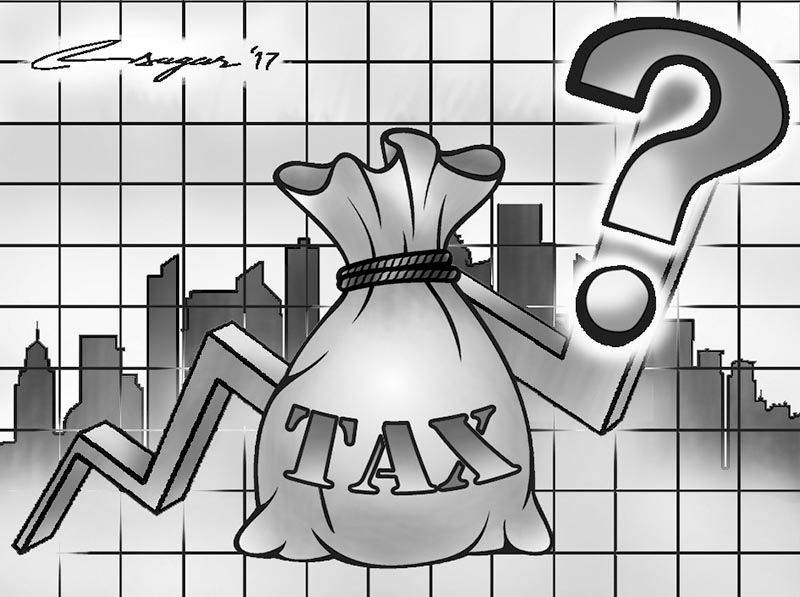Macroeconomic policies: Revisit is a must
Fiscal balance in the name of economic stabilization has been maintained at the cost of capital expenditure jeopardizing the prospect of raising productive capacity of the economy and minimizing supply bottlenecks
In the aftermath of great financial crisis of 2008, the efficacy of neo-liberalism led macroeconomic policies comprising mostly of fiscal, monetary and exchange rate are being challenged more sharply on both theoretical and empirical grounds.
Indeed, unlike the claims, the combined policies consisting of demand side led economic stabilization and supply side driven structural reforms focused on liberalizing or freeing of factor, financial and commodity markets have failed even to maintain macroeconomic balance or stability and more importantly to enhance higher growth with quality which is a prerequisite for productive employment with equity to a greater extent. Therefore, a serious rethinking on such macroeconomic policies is underway in many countries.
In view of prosperity with equity as a principle agenda of the nation, probably such a necessity is more urgent in the context of Nepal. Noticeably, however, the compatibility of our macroeconomic policies with such an agenda is yet to be thoroughly debated and discussed. Needless to add, macroeconomic indicators show very dismal performance of the economy. The low but poor quality growth amidst stagnating or decelerating agriculture, manufacturing and other highly promising sectors, widening wealth and income disparity alarmingly, high level of multidimensional poverty, continued high inflationary pressures, very high youth unemployment and underemployment and worsened external trade deficit corroborate this. This has happened despite notable the neo-liberal macroeconomic policy.
Nepal, indeed, is cited as one of the best performers in maintaining economic stabilization. The fiscal deficit has reduced from 4.5 percent of GDP during 1997-2006 to 3.4 percent of GDP during 2007-2016 despite grant share reduction. Very tight fiscal policy, central bank independence, money supply control and inflation targeting rules have made this possible.
As a part of structural reforms, deregulation and privatization policies have been strongly perused. Free trade policy with no restrictions on both exports and imports accompanied by very low tariff regime is there. Except in very limited areas, foreign direct investment is free with repatriation right. Principle of economic freedom is broadly followed with assurance to private property right. Truly, a phenomenal rise in revenue has taken place in recent years enabling a big jump in government expenditure. Along with increased role of the private sector, the services sector has expanded albeit rapidly with its contribution exceeding 55 percent of GDP indicating big structural changes in the economy apparently similar to a transition of newly industrializing countries. Why then is the economy in doldrums and highly problematic from the standpoint of big jump toward economy prosperity?
The crux of the problem is that the macroeconomic policies not only are grounded on shallow and contradictory premises but also undermine structural and institutional reforms to be essential for unleashing the productive forces toward rapid socio-economic transformation and prosperity.
Largely, fiscal balance in the name of economic stabilization has been maintained at the cost of capital expenditure jeopardizing the prospect of raising productive capacity of the economy and minimizing supply bottlenecks as complementarities to private investment. On the other hand, monetary policy has no growth role as per the central bank act. Though in recent years priority sector lending policy has been reintroduced with some focus on growth, exclusive focus on internal and external stabilization on the one hand and inducement to banking sector lending in quick yielding or high profit margin areas on the other has helped to flourish import trade and proliferate banking and finance in cities and accessible areas. Both policies constraining the expansion of productive base of the economy through tapping most promising sectors have jeopardized the internal revenue generating capacity as well as exports. The revenue though has increased, it is largely import based. Similarly, the exchange rate policy pegged with Indian currency since long has eroded export competitiveness markedly.
Thus, both fiscal and monetary policies shaping government expenditure and private investment patterns are neither growth nor productivity enhancing. The irony is that, despite being stabilization centric, they have failed to contain prices as well corroborating that supply factors and effective regulatory measures are more critical.
In such a given situation, it is urgent that deep rooted reforms are carried out in macroeconomic policies in a coherent way with focus on structural and institutional reforms. A mix of sound counter-cyclical policies and policies of enlarging and changing government and private investment patterns aimed at diversifying production structures will be essential. Grounded on these, more accommodative fiscal policy linking with nature of government expenditure and monetary policy linking with, among others, growth will be required. A revisit of exchange rate policy is also necessary. In short, an integrated not isolated demand and supply side driven comprehensive macroeconomic policy discourse will be necessary for accomplishing prosperity goal in a short span of time.






